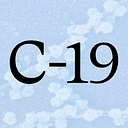Facing the Reality of Covid-19 is Less Scary Than Wishful Thinking
Donald Trump continues to deceive his followers with false hope — “a vaccine before you know it” is his latest ruse
The happy talk from the White House is hurting Americans who are being led to expect miracles, like a vaccine by Fall, rather than face the challenges head on. With thousands of people dying every day, cases climbing across the country, and an economy frozen for lack of a commitment to a safe reopening plan, false hope isn’t our friend.
The idea that the end is in sight, that the economy is ready to rebound, and we are close to having packed Alabama football games, will prolong the virus, the death toll, and our misery.
It is true that two vaccines are in human trials. But we need to tell the difference between hopes and prayers, and things we should plan on. We make many wrong decisions by thinking in terms of weeks and months, instead of a year or years.
If you listen to Tony Fauci, who leads vaccines for the NIH, he always adds the words “best case” to his answers. And when Trump is not around, Fauci follows “best case” with “12–18 months”. Meaning we could still be working against this enemy in 2022.
It’s true that there is a vaccine in human trials in the US and it’s true we could even be in parallel manufacturing soon — while we wait to test it. But it’s also true that this company has never made a vaccine before and that their type of vaccine (RNA) is promising, but new.
Injecting the virus in hundreds of millions must be done safely. And importantly, even if the vaccine works, it’s dosing is safe, and it’s side effects minimal, the immunity could potentially be 30–40% like a flu vaccine, not 97% like measles. Sadly the vaccine likely won’t be available to everyone including some of the people who need it most — like people with significant immune system issues. A combination of a partially effective vaccine and many being excluded could mean social distancing significantly into the future beyond a vaccine.
There are 6 other vaccines in process but of the seven, only two of the developers have actually made a vaccine before — Pfizer & Sanofi. These will take longer to start but could accelerate. What isn’t said out loud is that the furthest along in the trials are the Chinese. Don’t expect us to see that vaccine any time soon in the US.
While they have promise, the most likely case is that the early vaccines are unlikely to pan out, or if they do, that more vaccine work will still be needed for new strains. Even then we are well into next year before enough manufacturing capacity is added.
In the meantime there is discord on how to begin manufacturing and trial design which would need to begin immediately to have a vaccine even early next year. Of course, if those trials fail, there are about a dozen more vaccines that haven’t yet entered into trials and 80 more where work has begun. There will be a vaccine but the question will be when.
While we aim for a big early win, we should know that if a vaccine didn’t materialize in 2021, it would be much more typical. People sometimes say “we must do X until there’s a vaccine” as if we’re standing on one leg and it will be over soon. But we need to think differently and plan for a marathon. What would we do differently with this knowledge?
- Stick to our plan of creating comprehensive testing, tracing and isolation capability
- Plan an economy and jobs around needed industries (manufacturing, science, tech, food distribution, public health)
- Retrofit public areas for safe entry
- Expand safety of small businesses and small gatherings
- Invest in interventions to reduce transmission like reusable high quality masks
- Create flux capacity for all medical centers
- Provide health coverage
- Build remote services for high risk patients
- Improve food supply chains
- Upgrade the safety of work environments
- Temporarily close and retrofit meat factories
- Create grants for small businesses to go on line
- Plan for a year-round blend of distance and in-person school environments
The most important thing we can do in planning for an extended bout with Covid-19 is simply to make the disease less lethal by continually investing in new therapies and prophylaxis.
This would change the equation on herd immunity: at today’s fatality rate, getting 10% immunity means hundreds of thousands additional deaths. But imagine if the virus were treatable. Then the risky ideas of the herd immunity crowd would make more sense.
If we knew we could be tested and get early treatment, living with Covid-19 would be more like living with a bad, but not fatal virus. It would still do damage, but not enough to really slow us down much.
Today’s treatments like Remdesivir aren’t going to be the ones that do that. But the good news is therapies and prophylaxis can be tested much more quickly and manufactured more easily.
Trump either won’t face, or doesn’t think we can handle, the truth of the challenge that Covid-19 presents. But the truth actually isn’t scary. It’s more manageable than his lies: only 15 cases, testing is overrated, the virus is disappearing, 60,000 total deaths. We shouldn’t live by these extemporaneous and thoughtless guideposts. “A vaccine before we know it”, is a different song of the same tune.
We can exist with viruses like Covid-19 a lot better if we give ourselves the tools. And if we also adjust our mindsets so we don’t feel like we face constant disappointment. We all want to be hopeful. And we all occasionally fall into the trap of believing what makes us feel better. But we also stomach bad news better than we stomach lies.
None of us remembers the exact month the 1918 flu was defeated. We remember the high death toll and that once it was defeated, a period of prosperity followed. Patience is hard, but it’s an asset in getting through this successfully.

